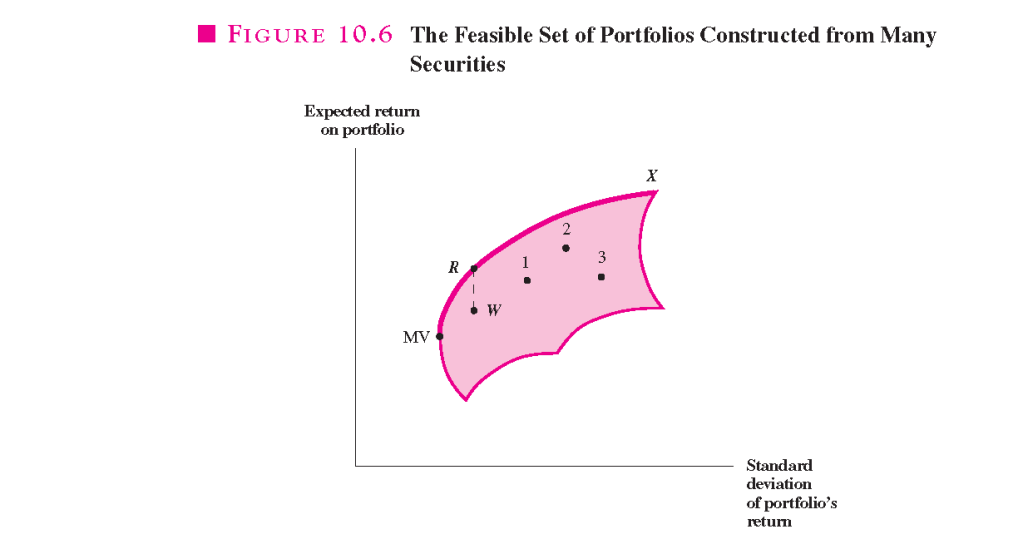Enq on Market interest rates
-
Hi, I would like to enquire how to actually determine the market interest rates/ market returns.
I understand that it is possible to get it from MAS website. But from MAS website there are actually quite a number of interest such as interbank , 3 mths interest etc.
In fact do we actually add on to the current SIBOR rates? Please advise. Thanks a million.
Pardon me for such a newbie qns =D
-
Your question is too general.
You might need to be more specific as to what you want to know.

-
Market interest rate as in the return market is compensating the investors?
Maybe for risk free assets, we might be able to get from the SGS.
What about if invest in basket of equities, like market portfolio as a benchmark, how could i possible to find the returns?
thanks ^^
-
You doing a project about CAPM?
Expected Return = RFR + beta [(Expected return (m) - RFR)]
I don't get your first part about market interest rate compensating investors though.

-
hm nt really lol. just kinda puzzled how to apply theory to real life scenario.
Cause normally say bonds. Discounted by interest rates. How to get this interest rate thats the qns.
P= C/(1+r)
how to get the 'r' thats the main qns.
As for the expected return you quoted in CAPM is it
[div + (P1 - P0)] / P0
where P1 = price at time 1, P0 = price at time 0, div = dividends
Please correct me if i'm wrong thanks haha.
-
SIBOR is different from bond rates.

-
Originally posted by Pippinpro:
hm nt really lol. just kinda puzzled how to apply theory to real life scenario.
Cause normally say bonds. Discounted by interest rates. How to get this interest rate thats the qns.
P= C/(1+r)
how to get the 'r' thats the main qns.
As for the expected return you quoted in CAPM is it
[div + (P1 - P0)] / P0
where P1 = price at time 1, P0 = price at time 0, div = dividends
Please correct me if i'm wrong thanks haha.
For normal discounting (PV, FV), the r just means the bank's savings rate.
For bond discounting, the r is not so straight forward and depends on the expected rate of return for equities - ie. it can be subjective, the discount rate you apply for the bond.
No, the CAPM expected return formula is the one I gave above - specific for expected returns.
Your formula is just for calculating standard actual % returns.

-
Erm. So now for discounting for future cash flows we use MAS bank savings rates? By using the past interest rates to estimate the future interest rates??
Another qns on expected rate of return for equities . How to derive it?? Just use the ROE fomular?
Expected Return = RFR + beta [(Expected return (m) - RFR)]
As for CAPM formular, how to find the expected market return??
Sorry for the noob qns. Learning thnks lol....
-
Originally posted by Pippinpro:
Erm. So now for discounting for future cash flows we use MAS bank savings rates? By using the past interest rates to estimate the future interest rates??
Another qns on expected rate of return for equities . How to derive it?? Just use the ROE fomular?
Expected Return = RFR + beta [(Expected return (m) - RFR)]
As for CAPM formular, how to find the expected market return??
Sorry for the noob qns. Learning thnks lol....
You are the first person I hear of trying to use discounting in real life. I suppose you can use the savings rate or the FD rate.
Things change, interest rates change. If you want to discount, then you gotta take whatever value you get with a pinch of salt.
You doing a project, studying for an exam or seriously trying to apply finance theory to real life? Different intentions calls for different answers.

-
Why not bonds?
Why savings and FD?
Sorry for my noobish question.

-
Originally posted by deepak.c:
Why not bonds?
Why savings and FD?
Sorry for my noobish question.

I suppose you can use the bond coupon rate, in this case SG Government bonds (?).
In the US, they use interest rate of their 3 mth T bills for their risk free rate.

-
Batman Curve.


-
Originally posted by Pippinpro:
hm nt really lol. just kinda puzzled how to apply theory to real life scenario.
Cause normally say bonds. Discounted by interest rates. How to get this interest rate thats the qns.
P= C/(1+r)
how to get the 'r' thats the main qns.
As for the expected return you quoted in CAPM is it
[div + (P1 - P0)] / P0
where P1 = price at time 1, P0 = price at time 0, div = dividends
Please correct me if i'm wrong thanks haha.
if my memory serves my correctly, the forumla u just state is for yield. assumption taken that you reinvest the div at the same rate.
the r if i am right, is the returns that your assets are getting, like yield from stocks, bonds, or even just FD , savings acc. but then again i might be wrong. been like 3 years since i last read up on stuff like this even tho i am now in the financial industry.
but discounting of fv is commonly used in retirement planning on a need based method. so it is not really that strange to wanna apply it in real life.